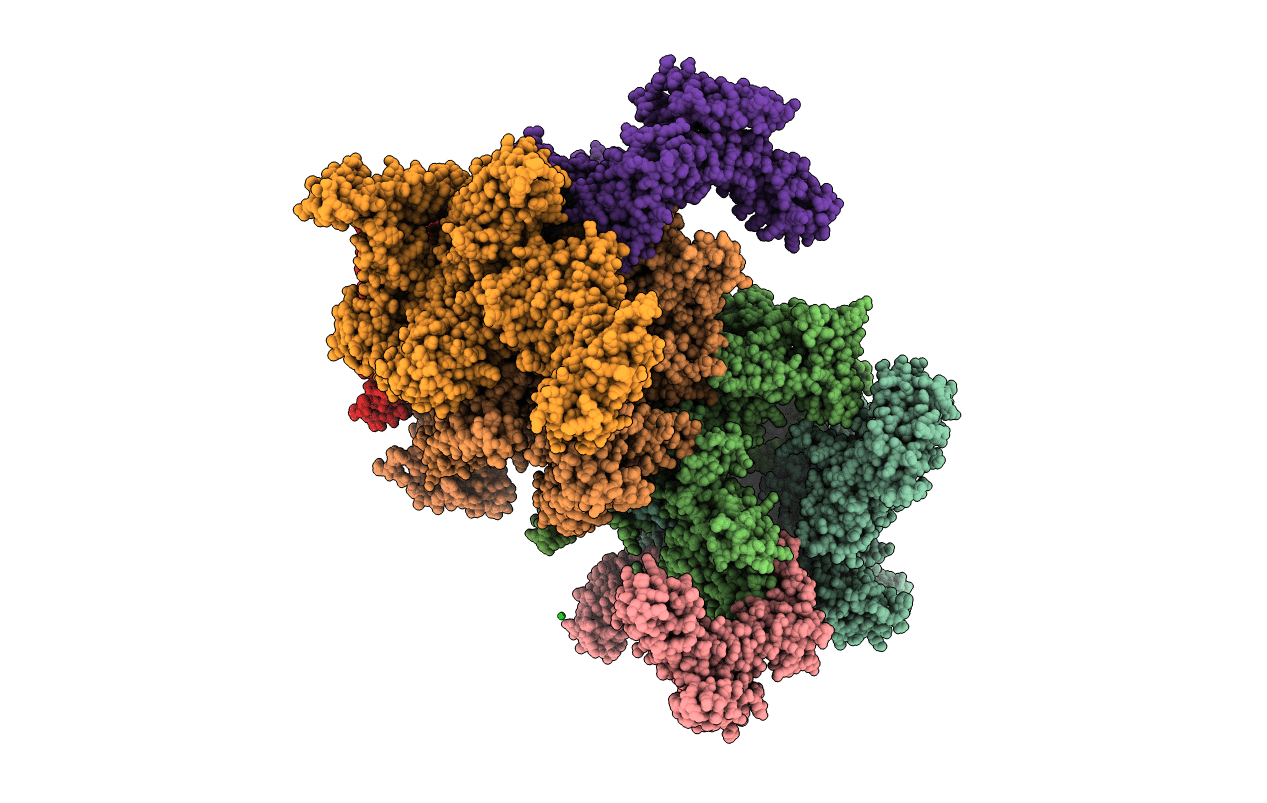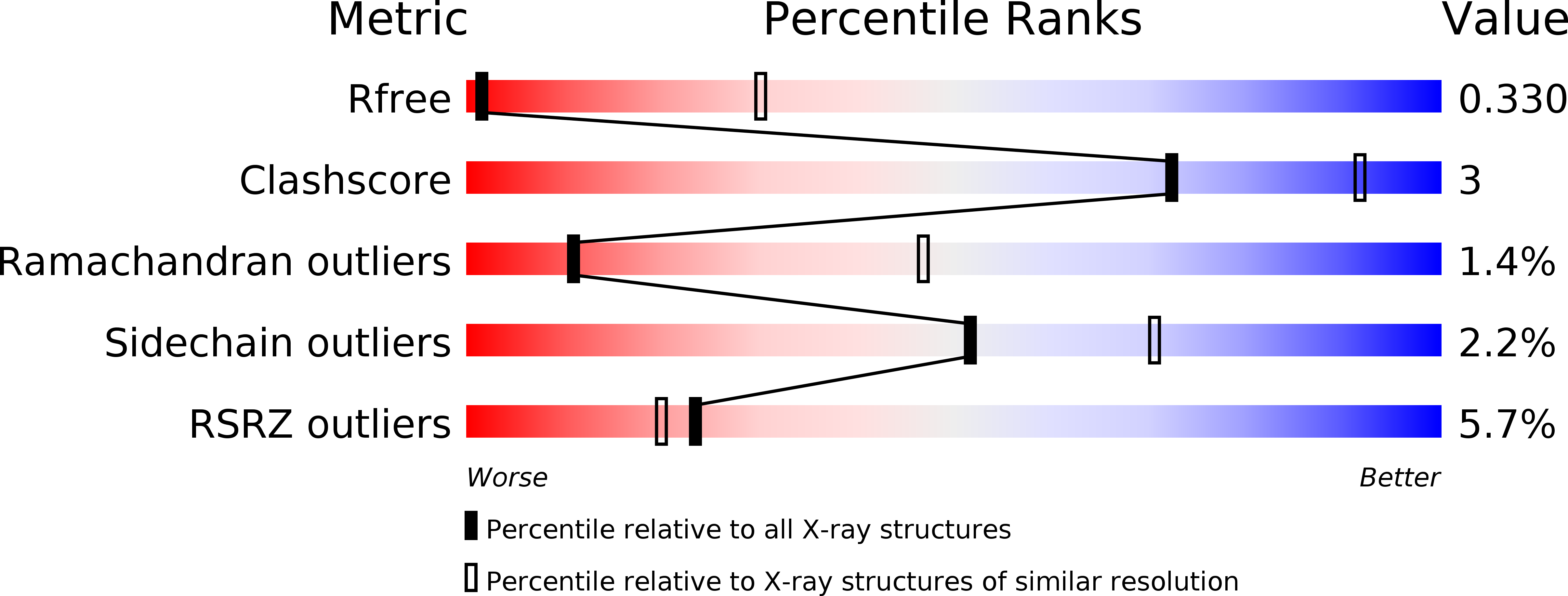
Deposition Date
2013-03-11
Release Date
2013-05-15
Last Version Date
2024-02-28
Entry Detail
PDB ID:
4JKR
Keywords:
Title:
Crystal Structure of E. coli RNA Polymerase in complex with ppGpp
Biological Source:
Source Organism:
Escherichia coli (Taxon ID: 1133853)
Escherichia coli (Taxon ID: 536056)
Escherichia coli (Taxon ID: 595496)
Escherichia coli (Taxon ID: 83333)
Escherichia coli (Taxon ID: 536056)
Escherichia coli (Taxon ID: 595496)
Escherichia coli (Taxon ID: 83333)
Host Organism:
Method Details:
Experimental Method:
Resolution:
4.20 Å
R-Value Free:
0.31
R-Value Work:
0.24
R-Value Observed:
0.25
Space Group:
P 21 21 21


